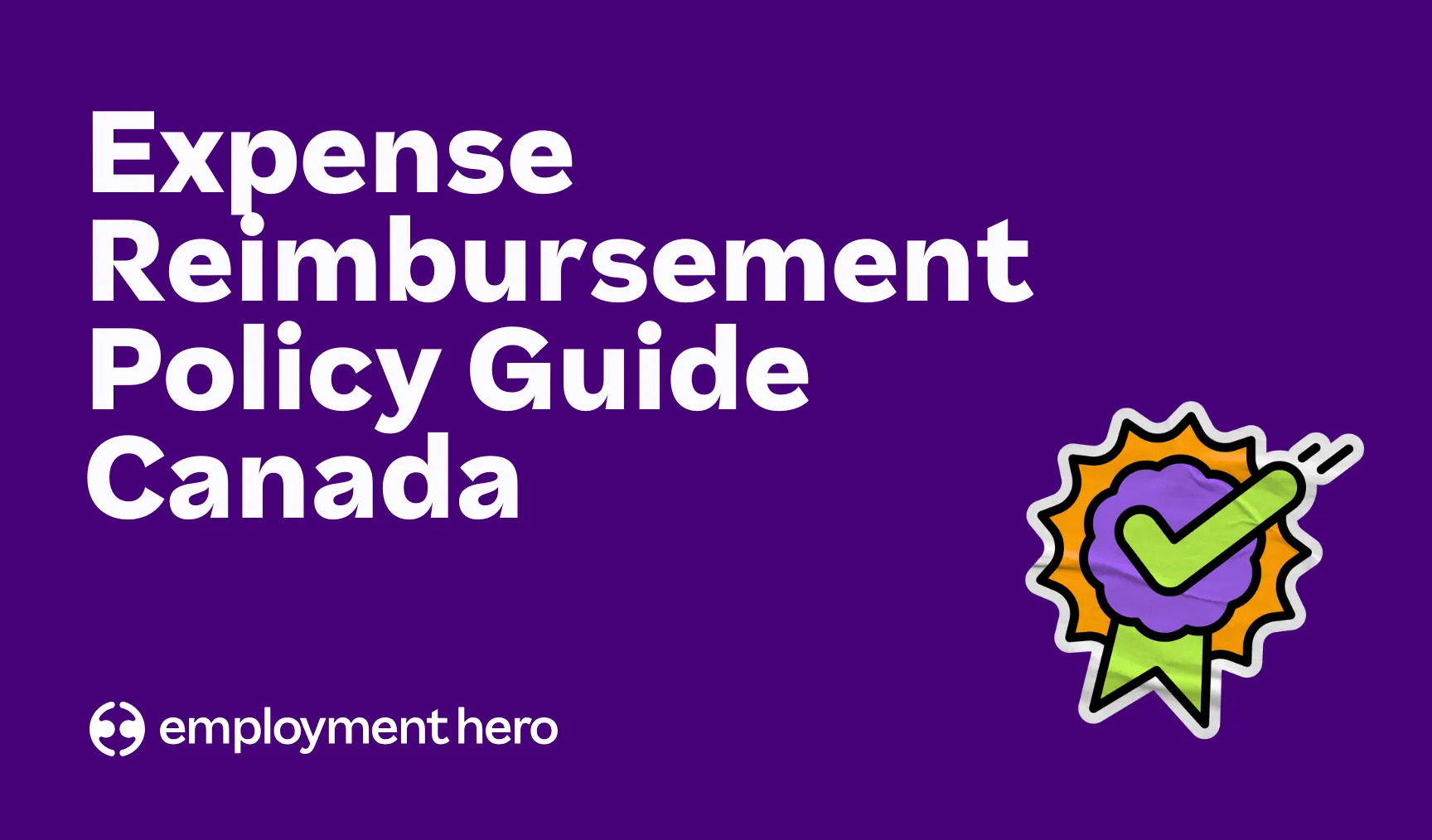2026 Canada Statutory Holiday Pay Guide (By Province)
Published
2026 Canada Statutory Holiday Pay Guide (By Province)
Published
Statutory holiday pay: more than a legal obligation, it’s a foundation for fair workplaces and engaged teams.. But in Canada, there’s no universal playbook: every province has its own rules. If you’ve ever felt overwhelmed by compliance fine print or unsure about that next payroll run—take a breath. You’re exactly where you need to be.
We’re not here to drown you in legalese or make you second-guess your instincts as an SMB leader. We’re here to make statutory holiday pay make sense. Get ready for no-nonsense answers, real talk about the pitfalls, and the sharp tips other guides skip.
Let’s break it all down—one province at a time.
Alberta, Canada
Alberta’s approach isn’t rocket science, but it’s also not “set it and forget it.” You’ve got to know the difference between eligible employees, odd exemptions and what actually goes onto the payslip.
Who is eligible for these holidays?
Alberta has 9 statutory holidays, but make sure you know who qualifies. Alberta has clear rules, but it pays to double-check—because not every employee is automatically eligible.
- Check duration: Your employee needs to have clocked in at least 30 workdays in the 12 months before the statutory holiday. This can be any 30 days, not consecutive—so even part-timers can qualify if they’ve put in enough shifts.
How is holiday pay calculated in Alberta?
Alberta takes a straightforward approach to statutory holiday pay, but the details matter. Here’s what you need to do:
- If your employee does NOT work on the holiday: Calculate their average daily wage. Add up all the wages they earned (including vacation pay, but not overtime) during the four weeks right before the holiday. Divide that total by the number of days they worked in those four weeks. That’s the amount they get for a statutory holiday they don’t work.
- If your employee DOES work on the holiday: They’re entitled to their average daily wage plus 1.5 times their regular rate for every hour worked on the holiday. Alternatively, you and your employee can agree to give a different day off with pay, in lieu of the holiday worked.
Hero tip: Always include any additional pay types required by legislation (like vacation pay or commission) in your calculations so you don’t miss a thing. The Government of Alberta’s General holidays and pay page breaks down these requirements. Set calendar reminders or use automation to check eligibility and pay calculations each cycle. Consistency wins trust.
Partner with Employment Hero to automate your payroll calculations and free up your team’s bandwidth from tedious, manual and repetitive tasks. Gain peace of mind, spot potential payroll problems proactively and ensure consistent, accurate compliance.
Ready to transform your payroll processes?
British Columbia, Canada
With B.C., eligibility and calculation rules can trip up even seasoned payroll pros. Let’s make sure you never miss a step.
Who is eligible for these holidays?
B.C. lays out eligibility in black and white, but missing a single rule means your employee could miss out.
- The province has 11 statutory holidays in a calendar year. Employees must have been employed for at least 30 calendar days before the stat holiday.
- They need to have worked or earned wages on at least 15 of those 30 days. Paid vacation and paid sick days count.
- Both full-time and part-time staff can qualify if they meet these benchmarks.
- Certain industries, like hospitality or construction, might have unique considerations.
How is holiday pay calculated in British Columbia?
Calculating pay correctly means using the right formula, every time.
- For an eligible employee not working on the holiday: Take all regular wages earned (include vacation pay; exclude overtime) in the 30 calendar days before the holiday and divide by the number of days worked. That’s their average day’s pay.
- If they work on the holiday: Pay 1.5 times their regular wage for the first 12 hours and double time after that—plus their average day’s pay on top.
- Always document any variances for unionized or contract staff.
How much should workers be paid for working on a holiday?
No more guesswork. Holiday pay isn’t just an extra day off—it’s a critical calculation. Here’s how to ensure your team is paid correctly when they work on a stat holiday.
- For any hours worked on a statutory holiday, pay 1.5x for up to 12 hours and 2x for any time over that, plus the additional stat holiday pay.
- If the employee qualifies, their regular stat pay is paid even if they work.
- If they’re ineligible, regular wages apply—no extra.
Hero tip: Use leave management tools to track eligibility and automate calculations to eliminate guesswork.
Employment Hero Payroll Software, for instance, automates time and attendance as well as leave tracking, so your team can manage payroll effortlessly without having to manually stay on top of tedious calculations.

Manitoba, Canada
In Manitoba, coverage is broad and calculations are refreshingly clear if you know where to look.
Who is eligible for these holidays?
Most employees are included, but don’t get tripped up:
- Manitoba has 9 statutory holidays. All employees are generally eligible, regardless of how long they’ve worked for you.
- The exception: Employees scheduled to work on a stat holiday who are absent without your permission.
- Contract, term, and part-time workers are eligible if scheduled for work on a stat holiday.
- Some industries, like agriculture or domestic work, can be excluded—read the fine print on the Manitoba Employment Standards.
How is holiday pay calculated in Manitoba?
Manitoba cuts through the noise. Here’s how:
- If an employee works regular hours: Pay their usual daily wage for a holiday not worked.
- If their hours vary, holiday pay is 5% of total gross wages (not including overtime) from the four-week period before the stat holiday.
- If your team member works the holiday, pay both their holiday pay and 1.5 times their normal wage for hours worked.
- Use timesheets and earnings records to back every calculation.
How much should workers be paid for working on a holiday?
Employees working on a holiday walk away with 1.5x their hourly rate for those hours—plus statutory holiday pay. Employees cannot waive their holiday pay—even if they request to substitute with another paid day.
Hero tip: Avoid errors by scheduling check-ins with employees before the holiday season. Confirm plans early—no surprises, no scrambling.
Nova Scotia, Canada
It’s “earn it to receive it” in Nova Scotia. The rules look familiar but hiding in the details are key nuances.
Who is eligible for these holidays?
The Labour Standards Code gives employees who qualify six holidays with pay. To be included, employees need to do two basic things:
- Work at least 15 of the 30 calendar days immediately before the statutory holiday.
- Work their scheduled shift before and after the holiday—unless absence is for a good reason or excused by the employer.
- Eligibility applies to full-time and part-time staff, so long as these requirements are met.
How is holiday pay calculated in Nova Scotia?
Simple: a regular day’s pay if they qualify and the holiday is a day they’d usually work. For variable schedules, use an average based on recent weeks.
How much should workers be paid for working on a holiday?
Regular holiday pay plus 1.5x their hourly wage for hours on the holiday. Remember: employees have to meet both attendance rules and minimum days worked.
Hero tip: Publish eligibility rules in a shared doc or digital bulletin. Empower your team to know where they stand, always.
Find this information useful? Grab our guide and power up your payroll confidence.
Ontario, Canada
Ontario’s “Last and First Rule” can trick even the most organized SMBs—so it pays to be sharp.
Who is eligible for these holidays?
Ontario has 9 public holidays. Navigating eligibility can feel like a maze. Cut through the confusion and know exactly who qualifies for holiday pay in Ontario.
- Most employees are eligible, as long as they work their last scheduled shift before and their first after a holiday unless there’s a solid reason for missing (think: emergency, not a last-minute road trip).
- “Reasonable cause” is up to you and may require proof or some judgement—so document everything.
How is holiday pay calculated in Ontario?
Don’t let complex calculations slow you down. Here’s the straightforward formula to ensure accurate holiday pay.
- Add up all regular wages and any vacation pay earned in the last four weeks before the holiday, then divide by 20. That’s the statutory pay.
- Remember, bonuses and overtime are not included.
How much should workers be paid for working on a holiday?
Paying your team correctly for holiday work isn’t just about compliance; it’s about valuing their commitment. Understand the options and requirements.
- Option one: Pay them their usual wage for hours worked + a substitute day off, paid as statutory holiday pay.
- Option two: Statutory holiday pay + 1.5x the regular rate for hours worked.
Things to consider
- Be proactive—communicate schedules weeks in advance.
- Use templates for holiday pay emails to set expectations and reduce confusion.
- Track attendance! Documentation protects both you and your employees.
Hero tip: Sync payroll calendars with local holidays for instant reminders. You’ll never miss another compliance deadline.

Québec, Canada
Québec’s system? Unique rules for a unique province. Get the formula right, and your people will thank you.
Who is eligible for these holidays?
Québec has 8 public holidays. Here’s how you know who qualifies:
- Most employees are entitled to a paid stat holiday unless they’re absent without authorization or valid reason on the working day before or after.
- Commission-only employees qualify, but you’ll need to adjust how you calculate their indemnity.
- Review sector-specific rules if your business operates in multiple industries.
How is holiday pay calculated in Québec?
Cracking Québec’s unique holiday pay calculations can be tricky. Here’s a straightforward breakdown to keep your payroll precise.
- Employees get 1/20th of the wages earned in the four complete weeks of pay before the holiday (excluding overtime).
- For commission-based employees, use their average commission over that period.
How much should workers be paid for working on a holiday?
When your team works on a statutory holiday, you need to know the exact payout. Ensure you’re compensating fairly and legally.
- For hours worked: Pay at the regular rate plus the calculated holiday indemnity. Alternatively, you can offer a paid day off within three weeks of the holiday (before or after) instead of extra pay.
Things to consider
Beyond the basics, Québec has specific nuances. Don’t overlook these critical details that could impact your compliance.
- Check union agreements and contract exceptions—they can override standard rules.
- If in doubt, consult the <CNESST> (Commission des normes, de l’équité, de la santé et de la sécurité du travail).
Hero tip: Automate these calculations in payroll software and flag exceptions. That’s one less headache for you.
Employment Hero Payroll Software automates vacation and holiday pay calculations to free your team from tedious, manual processes. We help you stay up to date with public holiday dates for Ontario, British Columbia and Alberta and automatically calculate the correct pay for your eligible employees.
Ready to switch to effortless payroll?
Saskatchewan, Canada
Eligibility isn’t a headache in Saskatchewan—everyone’s eligible. The challenge for SMBs? Getting each step right.
Who is eligible for these holidays?
Saskatchewan has 10 statutory holidays. Eligibility is simple in Saskatchewan, with most employees qualifying for holiday pay from their first day. Here’s how it works.
- No minimum service period—nearly all employees qualify right away.
- Some exceptions for specific occupations do exist, so check Saskatchewan Employment Standards for up-to-date lists.
How is holiday pay calculated in Saskatchewan?
Calculating holiday pay correctly is essential for compliance. Here’s the formula to follow for your Saskatchewan employees.
- Stat holiday pay is 5% of total regular wages, vacation pay, and commission earned in the four weeks (28 days) before the holiday.
- Overtime isn’t included in this calculation.
How much should workers be paid for working on a holiday?
When employees work on a statutory holiday, they’re entitled to premium pay on top of their regular holiday wages. Here’s what they earn.
- Employees who work on a stat holiday get 1.5x their regular wage for all hours worked, plus their statutory holiday pay.
- If a stat holiday falls on a normal day off, the employee still receives holiday pay if they worked anytime in the previous four weeks.
Things to consider
A few final details can make or break your compliance in Saskatchewan. Keep these points in mind to avoid common mistakes.
- Always use clear written records for substitutions or alternate arrangements.
- Part-time and variable schedule workers should be closely tracked to ensure compliance.
Hero tip: Publish a recurring “holiday pay 101” every quarter. Transparency earns loyalty.

Other provinces and territories overview
Every region adds its own twist to stat holiday pay. Here’s what SMBs need to watch for:
- New Brunswick: Employees become eligible for statutory holiday pay after completing at least 90 days of employment. Once eligible, employees are entitled to a regular day’s wage for the statutory holiday, even if they do not work that day. However, if employees are required to work on the holiday, additional compensation may apply based on provincial labour standards.
- Newfoundland & Labrador: To qualify for stat holiday pay, employees must have worked at least 30 calendar days prior to the holiday. Also, they must work their scheduled shifts immediately before and after the holiday unless they have a valid reason for absence. Eligible employees will receive an average day’s pay for the holiday, calculated based on their earnings during a defined reference period.
- Prince Edward Island: Employees qualify for statutory holiday pay after completing 30 calendar days of employment. During this period, they must work (or have earned pay) on at least 15 of those days. Once eligible, employees are entitled to a day off with pay or additional pay if they are required to work on the holiday, as per provincial law.
- Yukon, NWT and Nunavut: These territories generally adhere to federal labour standards when it comes to statutory holidays. A common practice is to calculate holiday pay as 1/20th of the wages earned in the four weeks leading up to the holiday. Specific rules may vary slightly depending on the territory, such as additional compensation for employees required to work on a holiday. Check territorial regulations for further details.
Hero tip: Keep a cross-province stat holiday calendar handy. Planning in advance can save your team from last-minute payroll chaos.
Download this guide so your team can refer back to this information on the go.
How to calculate statutory holiday pay in Canada
There’s no single “magic bullet” for Canada—every province demands its own approach. But the winning move is to know your average day’s pay formula cold:
- Most provinces: Average day’s wage = total earnings over reference period ÷ days worked
- Ontario/Québec: Use the “divide by 20” rule
- Manitoba/Saskatchewan: Use straight 5% of gross wages
Keep payroll systems clean and double-check each province’s latest employment standards. Don’t “set and forget” updates—employment law moves fast.
Resources:
- Government of Canada: Your Guide to the Employment Standards Act
- For province-specific bulletins, visit the official government sites for each province or territory.
Common mistakes employers make with statutory holiday pay
Complacency is the enemy of accuracy. Don’t get blindsided by:
- Assuming eligibility matches full-time hours. Many part-timers and casual staff are eligible too.
- Using the wrong formula for your region.
- Forgetting bonuses, vacation pay or commissions in calculation when they should count.
- Not clearly communicating schedules and eligibility up front.
Hero tip: Lean on checklists for each pay cycle. Train your team to review the basics so you’re not fighting fires later.
Stat holiday pay doesn’t have to be a game of “gotcha.” Nail your approach, and you’re not just avoiding penalties—you’re setting a new standard in how SMBs value their teams. You already do the hard work of running a business. We help you take employment off your plate, so you can focus on growth, innovation and celebrating the wins.
See how much easier managing stat holiday pay can be—download our guide with actionable checklists and plain language examples that help you get it right the first time.
To download the guide, we just need a few quick details.
Related Resources
-
 Read more: Expense Reimbursement Policy Guide Canada
Read more: Expense Reimbursement Policy Guide CanadaExpense Reimbursement Policy Guide Canada
Download a free expense reimbursement policy guide for Canadian businesses. Learn how to create a clear, compliant policy for managing…
-
 Read more: The professional development plan Canada’s top teams use
Read more: The professional development plan Canada’s top teams useThe professional development plan Canada’s top teams use
Download a free professional development plan template for Canadian businesses. Help employees set goals, track progress and achieve career growth.
-
 Read more: HR Managers: Don’t just survive the festive season, master it
Read more: HR Managers: Don’t just survive the festive season, master itHR Managers: Don’t just survive the festive season, master it
Make year-end easier: manage time-off, payroll, parties and shutdowns with confidence. Get practical tips for Canadian SMBs. Download the free…


















